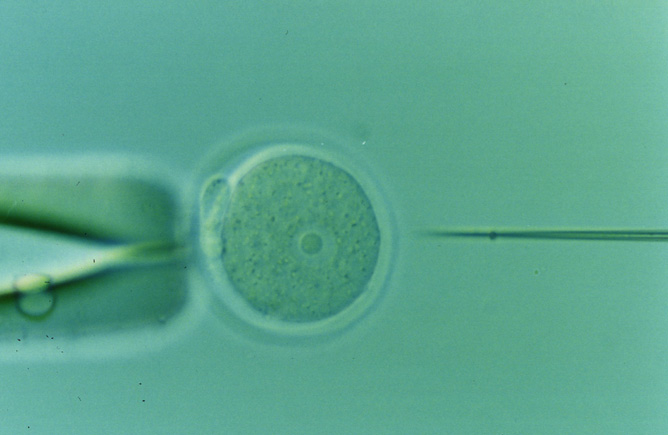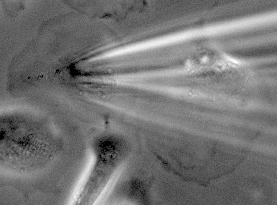| Home |
| Introduction |
| Need for Medicinal GMOs |
| Economics |
| Methods |
| Types of Medicinal GMOs |
| Ethical Issues |
| World Opinions |
| References |
Permission pending from http://www.med.osaka-u.ac.jp |
Methods |
Permission pending from |
____________________________________________________
One method associated with transgenic technology, is the process of nuclear transfer. Nuclear transfer is actually a cloning technique, but it has the potential to have far reaching effects on the development of transgenic animals. The first step of the nuclear transfer process involves removing the nucleus of a somatic cell from the animal that is to be cloned. The next step involves removing the nucleus from a normal oocyte, and then substituting it with the nucleus from the somatic cell. The oocyte is then shocked with an electrical impulse in order to initiate cell division and development. The oocyte is then implanted into a surrogate mother and allowed to come to term (Zinnen 1999).
Other methods of creating GM orgnaisms have been through the use of a gene gun, to litterally shoot new DNA into a cell, or by the use of Agrobacterium. A gene gun uses very small gold balls that have the new DNA attached to them. By using very high air pressure the gene gun shoots these balls at a cell, causing the introduction of new DNA that will combine with the DNA already present. Agrobacterium is a specific type of bacteria that has a certain region of it's DNA, called the Ti plasmid, that can move from the bacteria to a plant (Saskatchewan, 2004). By inserting foreign DNA into the Agrobacteriums Ti plasmid, scientists can introduce the new DNA by a more natural means, even though the result is a GM crop (Saskatchewan, 2004).
As discussed previously, the biggest problem with the institution of living drug factories is the fact that it is difficult to generate large numbers of protein producing animals. Traditional breeding methods are not always successful with regard to the retention of protein expression; therefore, cloning an animal that produces a particular protein in large amounts is a quick and easy way to generate a herd of these animals (Wells 2003). The technique of nuclear transfer also makes the process of identifying animals, which express a particular protein in large amounts, much less labor intensive.
There are, however, some difficulties still associated with the technique of nuclear transfer. It is these difficulties, which prevent the process from being the ultimate answer. These problems, which are not yet fully understood, result in improper development. Even if these development problems were resolved there is still the question of whether or not cloning has other unseen effects upon the animals that may not have apparent short-term consequences.
For More Information On Methods to Creat Plant GMOs:
How do make a transgenic plant?
Cloning Plants By Tissue Culture
How do we Develop Transgenic Plants?
____________________________________________________
_____________________________________________________
This web page was produced as an assignment for an undergraduate course at Davidson College.
©Copyright 2004 Department of Biology, Davidson College,
Davidson, NC 28035
Send comments, questions, and suggestions to William Wood at wiwood(at)davidson.edu

